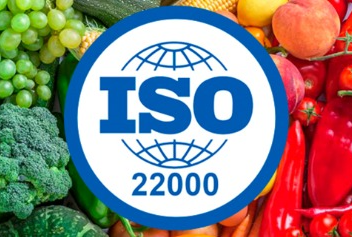Food safety is a global concern that affects consumers, producers, and governments alike. With rising demand for transparency and quality in the food supply chain, organizations need a robust system to ensure that food products are safe from farm to fork. This is where ISO 22000, the international standard for Food Safety Management Systems (FSMS), plays a crucial role.
What is ISO 22000?
ISO 22000 is a globally recognized standard developed by the International Organization for Standardization (ISO) that specifies requirements for a food safety management system. It combines key elements of Hazard Analysis and Critical Control Points (HACCP) principles with a structured management system approach similar to ISO 9001.
The latest version, ISO 22000:2018, provides a comprehensive framework for organizations in the food industry to identify, control, and reduce food safety hazards. It applies to all organizations involved in the food chain, including farmers, manufacturers, processors, distributors, retailers, and even packaging and transportation companies.
Objectives of ISO 22000
The main aim of ISO 22000 is to ensure food is safe for consumption at every stage of the supply chain. Its objectives include:
-
Preventing Foodborne Hazards: Identifying and controlling risks before they affect consumers.
-
Enhancing Consumer Confidence: Demonstrating a strong commitment to food safety.
-
Meeting Legal and Regulatory Requirements: Ensuring compliance with national and international food laws.
-
Promoting Continuous Improvement: Regularly monitoring and improving food safety practices.
Key Components of ISO 22000
The ISO 22000 framework integrates the Plan-Do-Check-Act (PDCA) cycle for continuous improvement and includes the following major elements:
-
Interactive Communication: Facilitating clear communication along the entire food chain.
-
System Management: Integrating food safety into the organization’s overall management system.
-
Prerequisite Programs (PRPs): Establishing basic hygiene and operational conditions.
-
HACCP Principles: Systematically identifying and controlling potential hazards.
Benefits of ISO 22000 Certification
Implementing ISO 22000 provides several significant benefits for food-related businesses:
-
Improved Food Safety: Ensures all risks are identified, assessed, and controlled effectively.
-
Global Recognition: Enhances credibility in international markets and among global buyers.
-
Customer Trust: Builds confidence in the safety and quality of food products.
-
Regulatory Compliance: Helps meet local and international food safety regulations.
-
Efficient Operations: Streamlined processes reduce waste and operational errors.
Steps to Achieve ISO 22000 Certification
-
Gap Analysis: Evaluate current food safety processes against ISO 22000 requirements.
-
System Development: Create and document the Food Safety Management System.
-
Employee Training: Educate staff about food safety procedures and hygiene practices.
-
Internal Audit: Review system effectiveness and identify improvements.
-
Certification Audit: Conducted by an accredited body to verify compliance and grant certification.
Conclusion
ISO 22000 serves as a powerful tool for organizations committed to delivering safe and high-quality food products. It not only strengthens consumer trust but also improves operational performance and regulatory compliance. In a world where food safety is non-negotiable, ISO 22000 ensures that every link in the food chain works together to protect public health and uphold global food safety standards.






